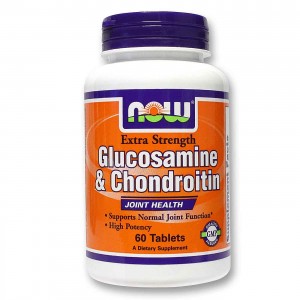Written by: Kevin Cann
Joint pain is an all too often occurrence for the majority of people. Our environment is not set up in an optimal way to promote joint health. We sit down hunched over far too much and we are in whole totally inactive. Then we attempt to make up for this inactivity in the gym by pushing far too hard and doing exercise with less than optimal technique that only makes matters worse.
With that said we need to optimize our environment to truly experience optimal joint health. This means getting up from our desk and standing, walking instead of driving, and performing our strength exercises in the gym with good form. Exercise matched with a nutrient dense diet can help decrease inflammation and reduce pain caused by osteoarthritis (1). This should always be the first course of action when attempting to solve some unwanted health effects.
Once we have accomplished this and we still have joint pain, or we are competitive athletes and the volume of work and a tough season are leading to some joint pain, glucosamine chondroitin may be an option that you are thinking about. The research is contradictory in terms of glucosamine chondroitin helping with joint pain.
 Most of the study groups are older adults with diagnosed osteoarthritis. These adults tend to be sedentary and participating in an exercise program with nutritional intervention seems to be the best treatment, especially when you think about risk versus reward. However, when glucosamine chondroitin is added in with exercise it may have a marginal effect on the perception of pain (2).
Most of the study groups are older adults with diagnosed osteoarthritis. These adults tend to be sedentary and participating in an exercise program with nutritional intervention seems to be the best treatment, especially when you think about risk versus reward. However, when glucosamine chondroitin is added in with exercise it may have a marginal effect on the perception of pain (2).
The mechanism in which glucosamine chondroitin works is not fully understood, but there are a few theories. It is believed to stimulate the anabolic process of new cartilage as well as to mitigate some negative effects of the inflammatory response (3). The good news is the side effects of glucosamine chondroitin seem to be very minimal.
The minimal side effects and potential rewards makes it a good choice to check out. To maximize the benefits of glucosamine chondroitin make sure you are exercising and eating nutrient dense foods. Another supplement taken with glucosamine chondroitin that may improve its benefits would be an omega 3 supplement.
Most Americans are deficient in the essential omega 3 fatty acids. More importantly the balance between omega 3 and omega 6 fats has gotten way out of control. Historically man has had balance between these two types of essential fatty acids. However, in modern society we are consuming as much as 30 times omega 6 to omega 3 fats.
This comes from a high consumption of processed foods and minimal consumption of fatty fresh water fish, eggs, and grass-fed meats. Omega 6 fats create inflammation, which is essential for our immune response. Omega 3 fats play a role in turning off the inflammatory process. Decreasing omega 6 intake and increasing omega 3 intake can help us control inflammation better and aid us in recovery from intense workouts.
I recommend my clients consume 1lb of fatty fresh water fish, such as salmon, per week. However, if they are participating in high intensity activities, or do not eat that much fish I will recommend they take a fish oil supplement. The goal is to get 2g-4g per day of the omega 3 fats EPA/DHA as these long chain fatty acids give us the most positive benefits.
Studies of shown positive results for people taking fish oil to aid in joint pain. One study reported that 60% of the study group reported positive findings on pain when taking a fish oil supplement. In fact, 59% of the study participants even stopped taking their anti-inflammatory medication (4). Fish oil is a much better choice for handling inflammation then anti-inflammatory medications due to unwanted side effects.
For the many of us out there suffering joint pain all is not lost. The first order of business is to make sure the diet is under control. Choose nutrient dense foods and attempt to avoid processed foods as much as possible. This will help us get all the nutrients we need to recover and also limit our intake of omega 6 fatty acids as they can promote inflammation. To help us balance our omega 3 and omega 6 fatty acids we should eat at least 1 lb. of fresh water fatty fish per week or take a fish oil supplement totalling in 2g-4g of EPA/DHA per day. If joint pain persists try a glucosamine chondroitin supplement on top of the previous things mentioned.
References:
[1]. JAMA. 2013 Sep 25;310(12):1263-73. doi: 10.1001/jama.2013.277669.
[2]. J Int Soc Sports Nutr. 2011 Jun 20;8(1):8. doi: 10.1186/1550-2783-8-8.
[3]. Int J Rheumatol. 2011; 2011: 969012.
[4]. Surg Neurol. 2006 Apr;65(4):326-31.
